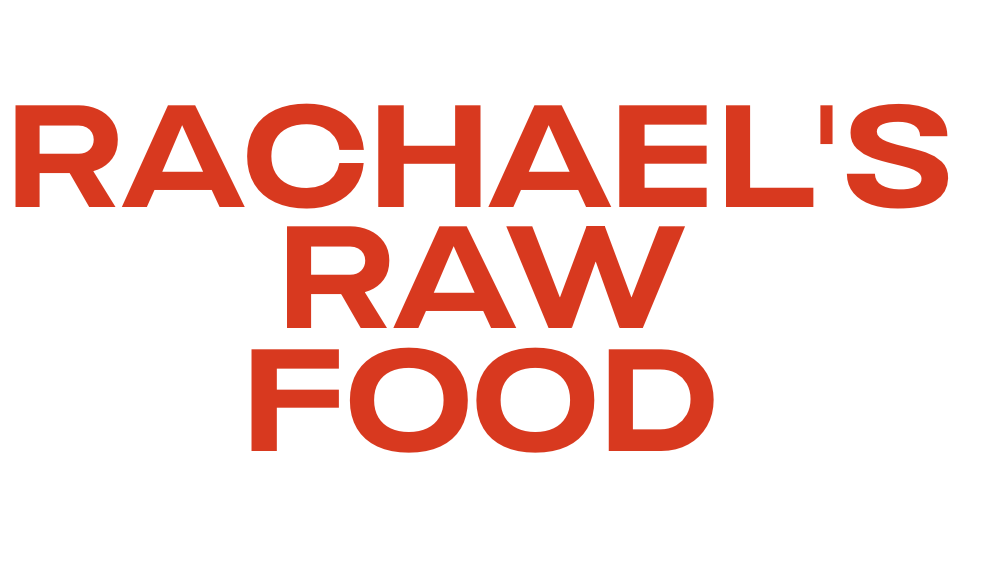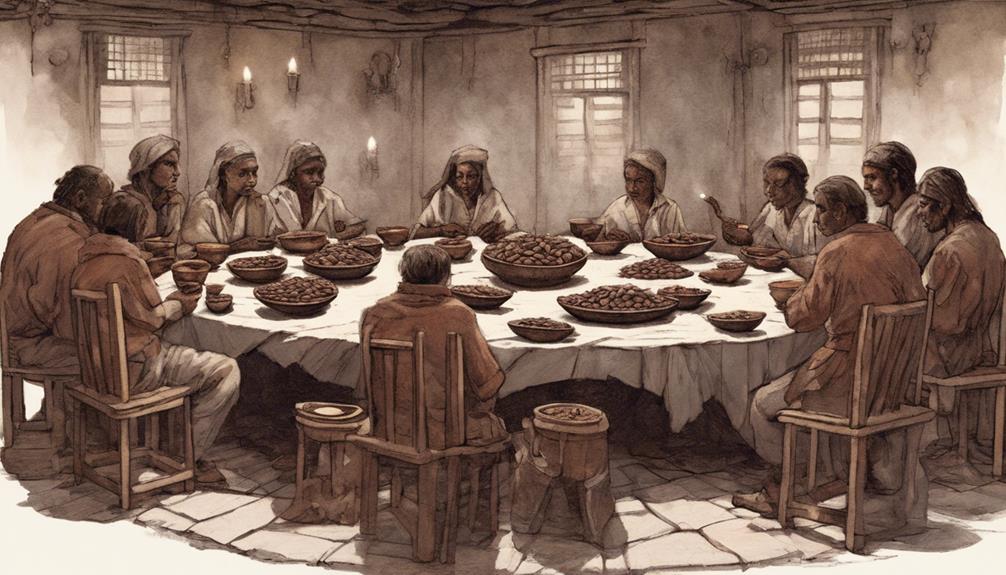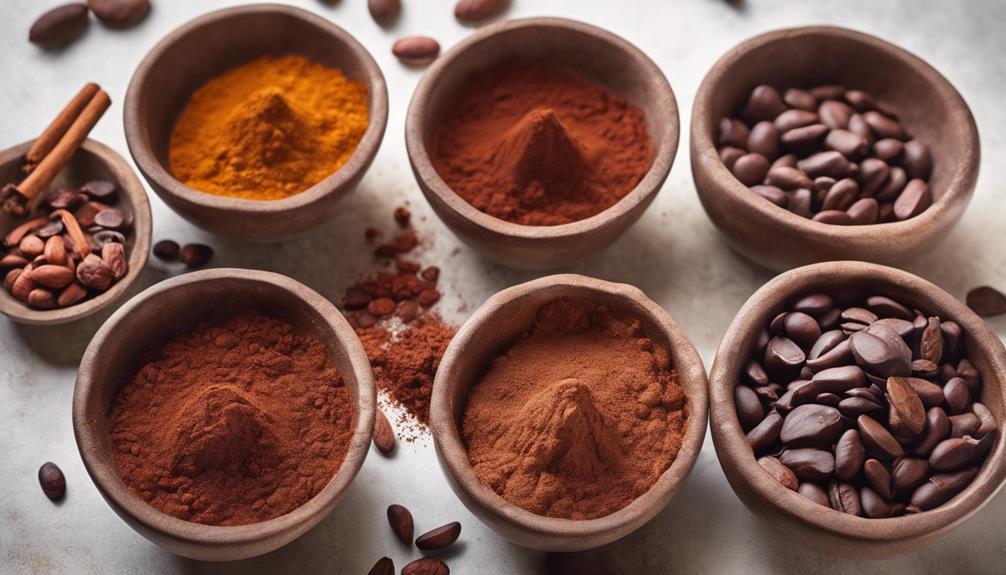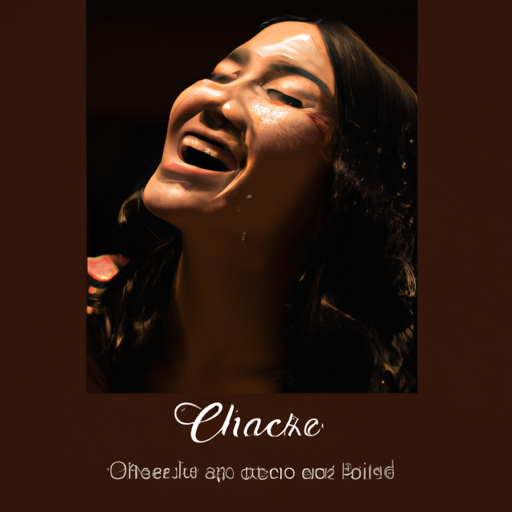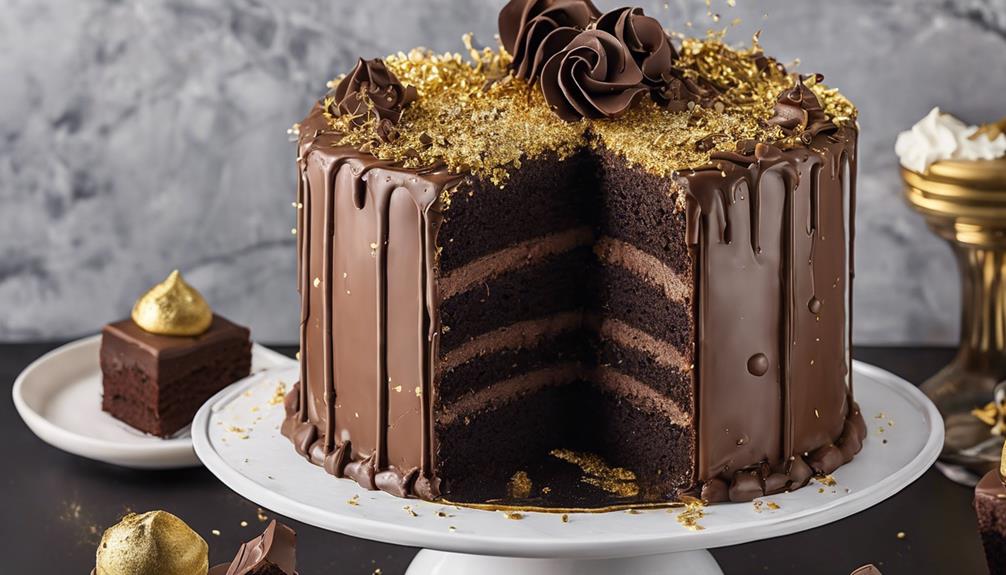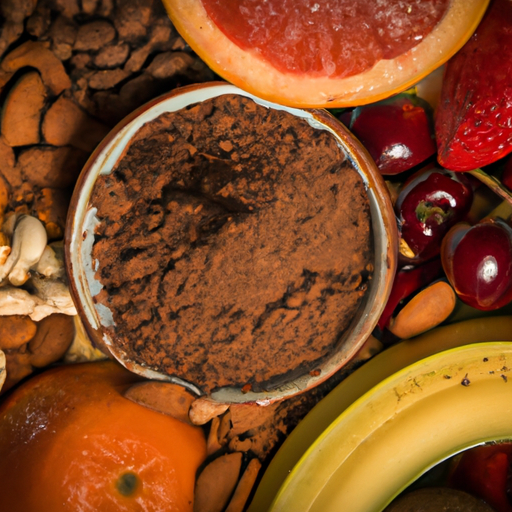Cacao ceremonies have deep roots in Mayan and Aztec traditions, offering a profound spiritual experience centered on connecting with the divine and emotional purification. During these ceremonies, shamans and healers prepare a ceremonial cacao drink with the goal of facilitating this deep connection. The practice highlights the importance of setting clear intentions, creating a tranquil space, and incorporating contemplative practices to enhance the experience. Cacao ceremonies offer a special opportunity for self-reflection, emotional exploration, and personal growth. If you are interested in learning more about the rich history and spiritual significance of cacao ceremonies, continue exploring to deepen your understanding.
Key Takeaways
- Originated in Mayan and Aztec traditions, cacao ceremonies are deeply spiritual and aim to connect with the divine.
- Cacao, in its pure form, is used in ceremonies for its spiritual and medicinal properties.
- Ceremonies involve setting intentions, emotional exploration, and heart-opening experiences.
- Conducting a cacao ceremony involves using ceremonial-grade cacao and creating a sacred space.
- Personal intention setting in ceremonies enhances focus, meaning, and cultivates transformative experiences.
Origins of Cacao Ceremonies
Cacao ceremonies originated in the ancient Mayan and Aztec traditions of Central and South America. These ceremonial rituals were deeply spiritual and had medicinal significance. The Mayans and Aztecs believed that cacao was a sacred gift from the gods, offering a pathway to inner awakening and heart opening. During these ceremonies, shamans and healers would prepare a special concoction using ground cacao beans, water, cacao butter, and a touch of sugar to create a ceremonial drink.
The purpose of these rituals was to facilitate a connection to the divine, release negative energies, and access a state of euphoria. Participants in the cacao ceremonies would set off on a journey of self-discovery and emotional cleansing. Through the consumption of this ritual cacao, individuals could experience a profound sense of love, unity, and wisdom within themselves. The ceremonial use of cacao wasn't just about indulging in a drink; it was a sacred practice that allowed for deep introspection and spiritual growth.
Cacao Vs. Chocolate Distinctions
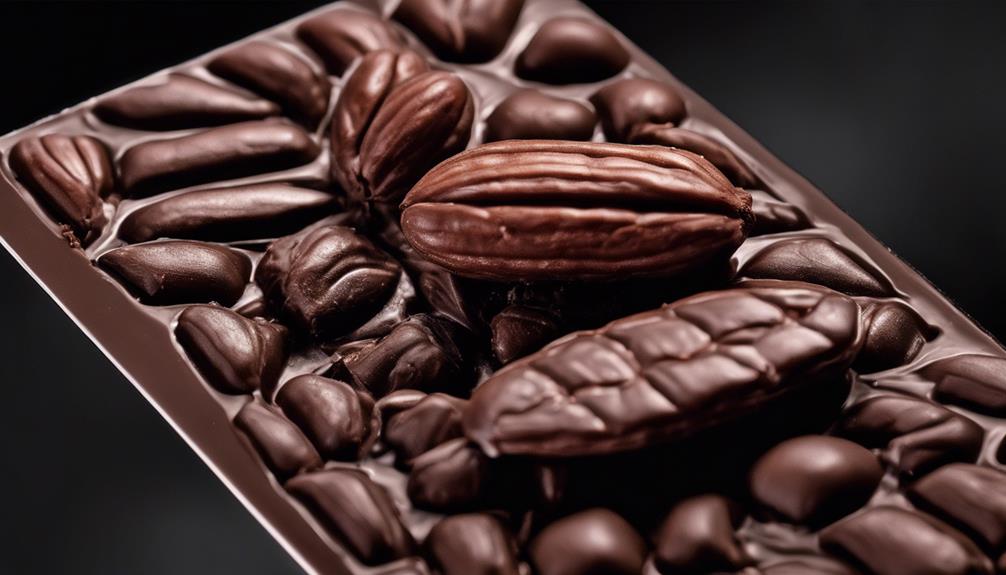
Coming from the ancient Mayan and Aztec traditions of Central and South America, the distinctions between cacao and chocolate are essential to understand in the context of cacao ceremonies.
In cacao ceremonies, ground cacao is utilized, which is the purest form of chocolate before additional processing. This ritual cacao isn't the sweet treat as commonly understood but a potent plant medicine with spiritual and ceremonial purposes.
Unlike regular chocolate, which often contains additives like milk and sugar, ritual cacao is simply made from ground cacao beans, cacao butter, water, and minimal sugar. This pure form of cacao is rich in iron, magnesium, and B-complex vitamins, offering various health benefits.
The bitter taste of ritual cacao sets it apart from the sweetness of traditional hot chocolate, emphasizing its focus on spiritual and medicinal properties rather than indulgence. Through the consumption of ritual cacao, participants aim to connect with themselves, release negative emotions, and tap into loving energy during ceremonies.
Rituals in Cacao Ceremonies
Rituals in cacao ceremonies often involve participants initiating intentions and expressing gratitude towards various elements, including cacao, ecosystems, and people. These ceremonies are deeply rooted in ancient traditions and offer a space for contemplative practices, emotional exploration, and creating a heart-opening experience. By engaging in these rituals, individuals can explore forgiveness, gain clarity of thought, and foster a sense of interconnectedness with others and the environment. The ceremonial use of high-grade cacao, combined with reflective exercises, aims to promote healing and empowerment among participants.
| Rituals in Cacao Ceremonies |
|---|
| Initiating intentions |
| Contemplative practices |
| Emotional exploration |
| Heart-opening experience |
| Forgiveness |
Through these rituals, participants can commence on a journey of self-discovery and emotional release, allowing them to connect with their inner selves and those around them in a profound and meaningful way.
Crafting a Cacao Ceremony
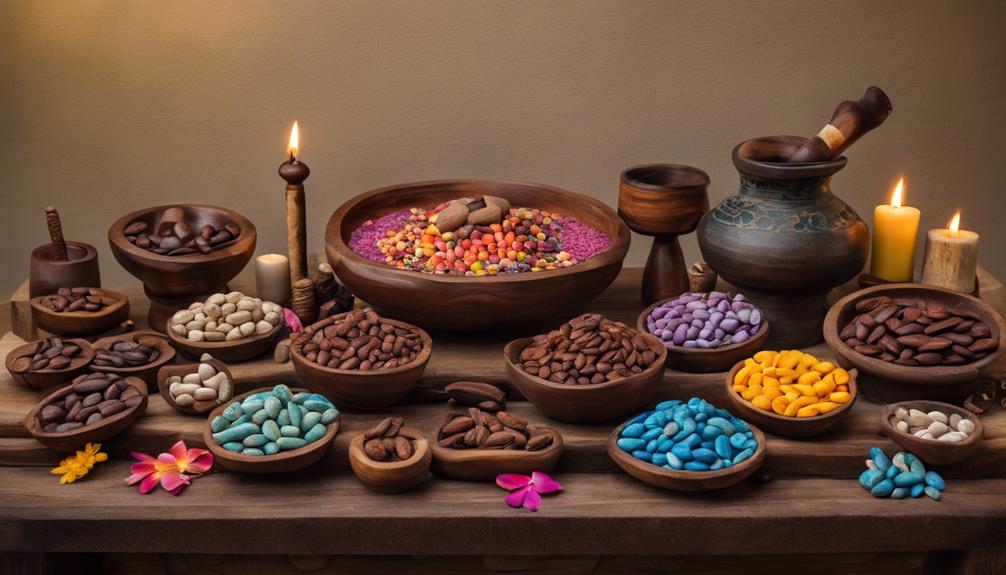
Crafting a meaningful cacao ceremony involves careful consideration of setting clear intentions for the experience. To start, select ceremonial-grade cacao sourced sustainably to guarantee authenticity in the ceremony. Creating a serene and sacred space can greatly enhance the atmosphere, allowing for a deeper connection to the ritual. Incorporating rituals such as meditation, reflection, and sharing can help in deepening the cacao ceremony experience. Beginning and ending the ceremony with focused intentions is key to amplifying its impact and significance.
When crafting your ceremony, remember that the quality of the cacao used can impact the overall authenticity and potency of the experience. Setting intentions before consuming the cacao can help guide the ceremony towards your desired outcome. Building a sacred space where you feel comfortable and at peace is essential for creating a conducive environment for the ceremony. By incorporating meaningful rituals and maintaining focused intentions throughout, you can enrich and deepen the entire ceremonial experience.
Health Benefits of Cacao Ceremonies
Choosing ceremonial-grade cacao sourced sustainably guarantees that participants can benefit from the high concentrations of vitamins, minerals, and antioxidants provided during cacao ceremonies. These health benefits of cacao ceremonies are profound. Cacao increases blood flow, delivering essential oxygen and nutrients to the brain, enhancing cognitive function and overall well-being.
This inner awakening and creative stimulation are facilitated by cacao in its pure form. Additionally, cacao ceremonies can help you connect to your highest self, guiding you into a meditative state where emotional release and self-discovery can occur.
Furthermore, cacao is one of the richest sources of antioxidants, which can boost your immune system and promote cellular health. Embracing the health benefits of cacao ceremonies can explore the depths of your being and nourish your body and soul simultaneously.
Cacao Ceremony Preparation Essentials
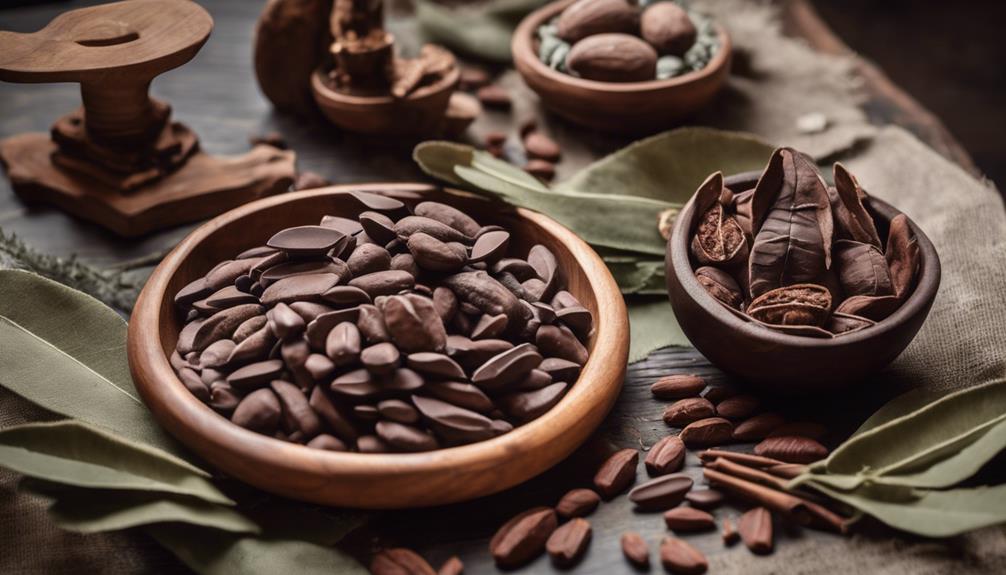
When preparing for a cacao ceremony, it's essential to select high-quality ceremonial-grade cacao, gather ceremonial supplies, and consider adding optional spices like cayenne pepper or cinnamon.
Choosing a serene and sacred space sets the tone for a peaceful ceremony, while setting a clear intention guides the energy and focus of the participants.
These steps lay the foundation for a meaningful and transformative cacao ceremony experience.
Ingredient Selection Tips
To guarantee an authentic and enriching cacao ceremony experience, prioritize choosing ceremonial-grade cacao sourced from heirloom Criollo beans for its purity and quality. When selecting the cacao for your ceremony, look for cacao paste made by grinding whole cacao beans, preserving the integrity of its natural components.
This pure cacao contains rich antioxidants, minerals, theobromine, anandamide, and PEA, providing heart-opening effects and enhancing your mood. Opt for ceremonial cacao prepared with cacao butter, water, sweetener, and optional spices like cayenne pepper or cinnamon to create a flavorful elixir.
Setting the Space
In preparing for a cacao ceremony, creating a sacred and intentional space is vital to setting the stage for a deeply transformative experience. To set the space for ceremonial purposes of inner awakening, consider incorporating elements like soft lighting, calming music, aromatic herbs, and comfortable seating. These components help in establishing a sacred and intentional environment that fosters a sense of peace and tranquility.
Make sure the space is free from distractions and energetically clear to allow participants to focus fully on the experience. By setting intentions before the ceremony begins, you can channel energy and create a meaningful experience for all involved. Remember, the ambiance plays an essential role in enhancing the overall journey during the cacao ceremony.
Personal Intentions Setting
Setting personal intentions is a pivotal aspect of preparing for a cacao ceremony, guiding the energy and focus towards transformative experiences. When reflecting on your goals for the ceremony, it's crucial to set clear and specific intentions. These intentions can range from seeking emotional healing to spiritual growth and self-discovery.
By setting these intentions, you create a roadmap for the inner ceremonial purposes you wish to achieve. This process not only helps in focusing your energy but also enhances the overall experience, making it more meaningful and profound.
Personal intention setting is a powerful tool that allows you to cultivate a space for transformative experiences during the cacao ceremony, leading to significant growth and self-discovery.
Frequently Asked Questions
How Does a Cacao Ceremony Work?
I set intentions, pray, and consume ceremonial-grade cacao. Singing, dancing, or sharing as a group enhance the experience. The ceremony creates a heart-opening journey of love, connection, and oneness, allowing emotional release and personal growth.
Who Should Not Do Cacao Ceremony?
Cacao ceremonies are not for everyone. Those with heart conditions, high blood pressure, sensitivity to caffeine, severe anxiety, panic disorders, or on specific medications should avoid them. It's important to prioritize safety and well-being.
What to Do When Drinking Ceremonial Cacao?
When drinking ceremonial cacao, I set intentions, express gratitude, and connect with its spirit. It opens my heart, releasing emotions and providing clarity. Sharing insights and experiences with others deepens connections and understanding during the ceremony.
How Do I Choose Ceremonial Cacao?
When choosing ceremonial cacao, I prioritize authenticity by selecting heirloom Criollo beans for quality. Opt for cacao paste made by grinding whole beans for a pure experience. Supporting indigenous communities is essential for ethical sourcing, enhancing the connection to the source.
What is the Purpose of a Cacao Ceremony and How Does it Work?
The purpose of exploring cacao ceremony ritual is to create a sacred space for individuals to connect with themselves and others on a deeper level. This ancient practice involves drinking a ceremonial cacao elixir, which is believed to open the heart and enhance spiritual awareness. During the ceremony, participants engage in meditation, breathwork, and intention setting, allowing them to experience profound healing and inner transformation. By honoring the ancient traditions, the cacao ceremony works as a powerful tool for personal growth and connection to the divine.
Conclusion
To sum up, cacao ceremonies have ancient origins and offer a unique way to connect with oneself and others through the ritualistic consumption of cacao. Remember to differentiate cacao from regular chocolate and prepare for your ceremony with intention and mindfulness.
The health benefits of cacao ceremonies are numerous, so make sure to include this practice in your self-care routine. Embrace the tradition and experience the magic of cacao ceremonies for a truly enriching and transformational journey.
